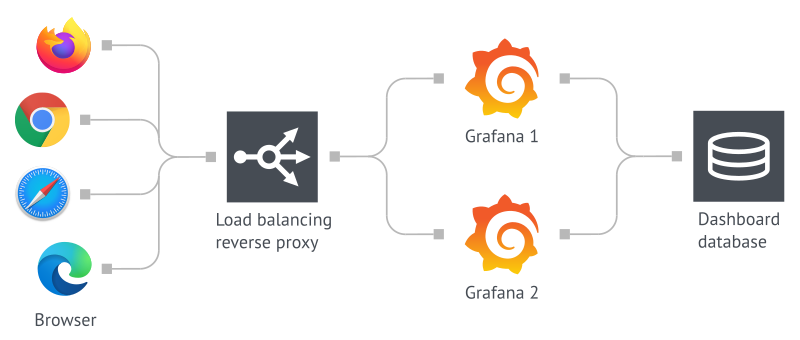
GRAFANA NODE EXPORTER NO DATA HOW TO
How to Install Prometheus on an Ubuntu machine ? You can also query the Prometheus server using the PromQL and can visualize the data in its own Web UI and the Grafana Dashboard. Pushgateway is used as an intermediary service. Prometheus server continuously pulls metrics from jobs or apps but at times it is not able to pull the metrics due to servers not reachable due to NAT or firewall and in that case, it uses Pushgateway. job_name: 'node_exporter_metrics' # we are including Node Expoter job_name: 'prometheus' # Prometheus will scrape

# To scrape metrics from prometheus itself add the below block of code.
GRAFANA NODE EXPORTER NO DATA UPDATE
Refresh your APT Cache to update your package list by running the below command.Sudo add-apt-repository "deb stable main" Next, a dd the Grafana repository to your APT Sources.Adding the GPG key to your apt installation’s list of trusted key allows you to download and verify GPG Signed Packages. Enough Theory, let’s dive into installing Grafana on Ubuntu Machine? In the previous section, you learned what Grafana is and what it can do for you. It also supports cloud monitoring vendors such as Amazon cloud watch, Microsoft Azure, SQL Db’s and Postgres, and MySQL. Grafana comes bundled with rich support for many time-series databases like Graphite, Prometheus, Elasticsearch, Influx DB.

Grafana is an open-source tool that allows you to query, visualize, analyze and alert on metrics and logs no matter where they are stored. Configure a Prometheus Monitoring Server with a Grafana Dashboard.How to Install Grafana on Ubuntu Machine.In this tutorial, you will learn how to build a monitoring Dashboard with Grafana and Prometheus.

Prometheus acts as the storage backend and Grafana as the interface for analysis and visualization. One such open-source tool which performs analysis of logs, errors from various sources and centrally manages the monitoring of all of it & notifying admins is GRAFANA 📊 but the combination of Prometheus and Grafana is becoming a more and more common monitoring stack used by DevOps teams for storing and visualizing time series data. So, it is equally important to monitor your applications and set alerts in case anything goes wrong. This is great when you see an application or website running on your Phone or PC browsers, right? Having said that, what if when the browser doesn’t open the site or load it very slow ?Ĭertainly, it needs attention for admins. Today most of you are working on building the cloud infrastructure for an organization and then deploying multi-tier microservices and applications, and so on.


 0 kommentar(er)
0 kommentar(er)
